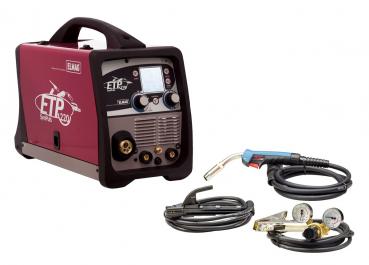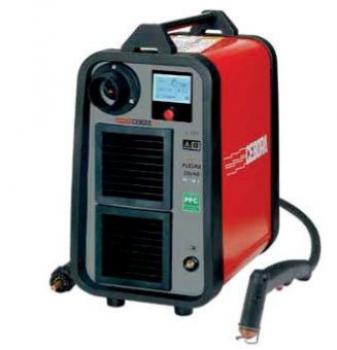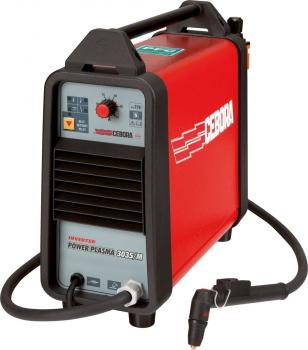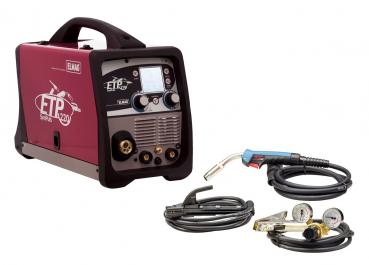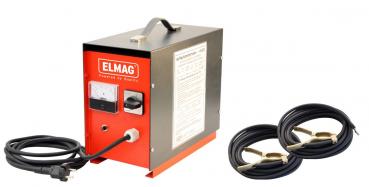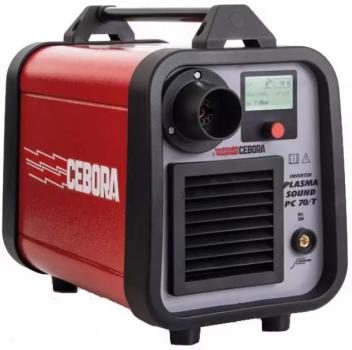- You do not have any products in your shopping cart yet.
Welding metal: This is how it's done
Knowledge about metal welding:
Metal welding is a cost-effective process with which metal components can be permanently joined together. The welding technology required for metal welding has been continuously developed since the first practical welding machine for metal was introduced. Today, a metal welding machine is part of the basic equipment of every metalworking company. In this guide, we have collected and answered the most important questions about metal welding, welding technology and metal welding equipment.
Table of contents Metal welding:
How does welding work?
Over the years following the introduction of the first practical welding equipment, various methods of metal welding were developed for different applications. Today, a distinction is generally made between two different welding processes for metal welding.
The first metal welding process is known as fusion joint welding. Here, so much heat is applied to the components to be joined in the joining area that the components melt, the edges flow into each other and can thus join. This welding process includes electrode welding and gas-shielded welding. Fusion welding can be carried out with or without filler materials.
The second common process is known as press-fit welding. In this welding process, pressure and heat are used to join components together. A distinction is made between press-fit welding:
-
Cold pressure welding
-
Explosive welding
-
Electromagnetic pulse welding
-
Friction welding
-
Rotary friction welding
-
Ultrasonic welding
-
Friction stir welding
-
Resistance spot welding
What welding techniques are available?
Three different welding techniques are used in industry, trade and in the private hobby room:
Gas fusion welding
Gas fusion welding is one of the oldest welding processes and a welding technique that is still used today for certain tasks. In gas fusion welding or autogenous welding, the joint between the components is heated to the melting point by a flame. The flame is generated by a mixture of oxygen and gas. Acetylene is generally used as the fuel gas. Different temperatures can be set by varying the mixture of oxygen and fuel gas. Depending on the task, a filler material can be fed to the joint with a welding rod during oxyfuel welding.
Electrode welding / electric welding
In electrode welding, the heat required to melt the metals is not generated by an open flame, but by an electric arc. A so-called rod electrode is used to generate the arc. The electrode is usually coated. This coating melts during welding and protects the weld seam from the oxygen in the air.
In electrode welding, the workpiece is the earth pole. To start the welding process, the workpiece is briefly touched with the electrode. This creates a short circuit. The arc is formed by lifting the electrode, which melts and welds the material.
Gas-shielded arc welding
In principle, gas-shielded arc welding works in the same way as electrode welding. The difference is that in gas-shielded welding a separate shielding gas is fed to the welding point. A wire that is fed centrally from a reel through the so-called handpiece or a manually fed welding wire is used as filler metal. The shielding gas protects the weld seam from the oxygen in the air. MAG/MIG and TIG (MAG = Metal Active Gas, MIG = Metal Inert Gas, TIG = Tungsten Inert Gas) are the most important shielding gas welding processes with the most extensive preparation.
Which metals can be welded?
In general, all metals can be used for metal welding. Alloyed and unalloyed steels, stainless steels, non-ferrous and light metals can be welded with the right welding equipment. The reason for this is the so-called ductility of the metals. Ductility means that metals are malleable and do not break when bent. However, welding is not always the best choice for joining metals permanently. For thin sheets of brass or copper, for example, soldering is more suitable than welding.
What protective measures should be taken when metal welding?
Metal welding is potentially dangerous due to the high heat, the UV radiation generated by the arc, the bright light and, last but not least, the intense flying sparks. This is why certain protective measures must be taken and adhered to when welding, not only in the professional sector, but also in the home hobby room.
A welding helmet or a so-called hand shield are the minimum requirements. The welding helmet has the advantage that, unlike a welding shield, it does not have to be held during work. Both hands are free. The second important point is suitable protective clothing. This must be fireproof. Protective clothing also includes hard-wearing leather gloves for welders. High, closed shoes are also recommended for working with a welding machine. Simple safety goggles that only cover the eyes are by no means sufficient. Welding produces strong UV radiation, which can cause sunburn with all possible negative consequences within a short time if the skin is unprotected.
Earth terminal and ventilation during welding
When working with a welding machine for metal , always ensure that the entire welding area is dry and the earth connection is securely fastened. If the earth terminal becomes loose during welding, the welding current will seek an alternative path through the working environment. This can lead to life-threatening electric shocks.
Another important point for personal safety when welding is good ventilation of the work area. All welding produces gases that are hazardous to health. Good ventilation or active extraction of the welding gases are essential for health reasons. If possible, a welding machine for metal should therefore be used outdoors instead of in the hobby room.
How do you weld in practice?
In principle, the procedure for working with a metal welding machine is always the same, regardless of the welding process selected. Firstly, the workpieces must be carefully prepared. This means that rust must be removed, at least in the area of the weld seam , and paint must be removed from a larger area next to the weld seam. The next steps are
-
Fix the components in the intended position using screw clamps or crimping pliers
-
Connect the earth cable to one of the components to be welded or to the welding table
-
Setting the welding current depending on the material and material thickness
-
Setting several spot welds along the weld seam
-
Removing the slag from the spot welds and checking the position
-
Creating the continuous weld seam
Once the slag has been removed from the weld seam, the quality of the weld seam can be checked. The position of the components can be corrected relatively easily, if necessary, before the actual weld seam is produced by initially only spot-welding the components, known as tacking.
Welding the fixing points shows whether the welding current has been selected correctly. If the welding bead is only slightly raised above the components, this is a sign that the welding current has been selected correctly. If, on the other hand, the welding bead only adheres to the surface, the welding current on the welding machine was set too low for metal. A correct connection between the components could not be created.
Suitable welding equipment in our shop:
1 to 4 (from a total of 4)
If you want to see more welding machines, click here to go to the category: Welding machines
Which welding machine is suitable for DIY enthusiasts?
Metal welding is a skilled trade. This means that welders undergo three and a half years of training before they master the technique of metal welding with all its facets and possibilities. Welding equipment for DIY enthusiasts should therefore be as easy and safe to use as possible. As a rule, the setting options are limited compared to a professional device. Nevertheless, very good welding results can be achieved with these welding machines. There are two different types of metal welding machines with different welding technology that are very suitable for DIY enthusiasts:
Electron welding machines
The simple design and uncomplicated handling make electron welding machines the ideal equipment for the hobby cellar. These welding machines provide DIY enthusiasts with an easy-to-master welding technique that can be used for a wide range of tasks. For example, welding work on vehicles, garden tools or interior fittings. Depending on the electrode used, they can be used to weld different metals. Another advantage is that electron welders are comparatively inexpensive.
Gas-shielded arc welders
Gas-shielded arc welders offer proven welding technology and are also suitable for DIY enthusiasts and beginners. However, handling this welding technology requires a little more practice than an electron welder. On the other hand, thin workpieces such as car body panels, panelling or tools can be welded with a gas-shielded welder. Before purchasing a welding machine for the hobby room, you should therefore consider what the machine will be used for.
What is the difference between welding and soldering?
There are two main differences between metal welding and metal soldering. In metal welding, the material in the area of the joint is heated to such an extent that it melts, flows into each other and forms an inseparable joint after cooling. In soldering, on the other hand, the metal is only heated to the point where it can be wetted by the solder. The metal is not melted. If the solder cools down, a joint is also formed. However, solder joints can be loosened again by applying more heat.







